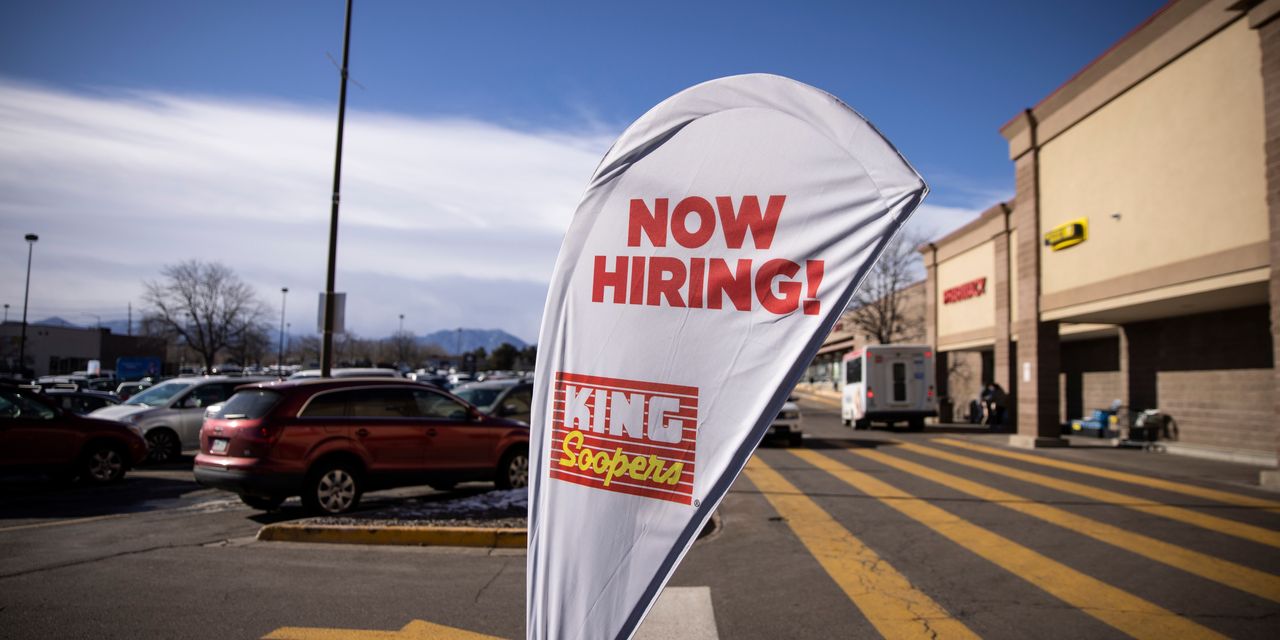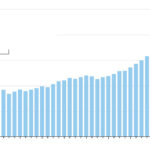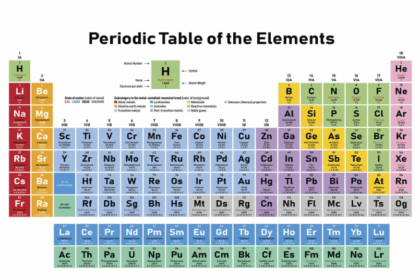
The labor market remains historically tight, with the number of unemployment-benefits filings holding last week around the lowest levels in five decades as firms struggled to remain fully staffed amid a resurgent pandemic.
Initial jobless claims, a proxy for layoffs, edged up by 7,000 to a seasonally adjusted 207,000 for the week that ended Jan. 1, but remain near the lowest levels since 1969.
The fast rise in cases tied to the Omicron variant of Covid-19 could slow the labor market’s recovery from the worst of the pandemic in the coming weeks, but the most recent data indicates employers are reluctant to lay off workers at a time when few job seekers are available and the rate of quitting is at a record high.
“While many people may be missing work due to illness or quarantine requirements, that doesn’t mean they will all be laid off and eligible for benefits,” said Nancy Vanden Houten, lead economist for Oxford Economics. She added jobless claims could rise due to Omicron, “but if the surge in cases passes quickly as it has in other countries, we would expect the impact on claims to be relatively short-lived.”
Jobless-claims data can be volatile around the turn of the year and is adjusted to compensate for seasonal fluctuations, such as the end of temporary holiday jobs.
Separately, U.S. consumer demand for goods and an easing of supply-chain constraints drove a surge in imports in November, pushing the trade deficit to $80.2 billion, close to a record set earlier last year, the Commerce Department said Thursday. Backlogs at U.S. ports showed signs of receding in the fall, and consumer spending was solid early in the holiday shopping season.
Exports rose in November, but at a slower pace than imports, as U.S. border restrictions on international travelers eased. Foreign tourism dollars spent in the U.S. are counted as an export.
Economists are watching for signs that the labor market is cooling in the face of increased Covid-19 infections, which could cause consumers to pull back, but a constrained supply of workers appears to be a larger challenge. Job openings are trending near record highs and an unprecedented number of Americans have been quitting their jobs in recent months, including 4.5 million in November. That means employers may bear the brunt of the impact from another season of public-health disruptions.
“Employee confidence is extremely high; there are so many choices,” said Paul McDonald, senior executive director at staffing firm Robert Half International Inc. “The demand for skilled talent is unprecedented right now.”
There have been more than 10 million job openings every month since June 2021, according to data from the Labor Department and jobs site Indeed. The imbalance between job seekers and open jobs has gotten so extreme that in November there were roughly two available unemployed workers for every three openings.
The number of people filing for continuing unemployment benefits from all jobless programs, including extended benefits, was 1.7 million in mid-December, the Labor Department said. That was down from 20.2 million a year earlier. The data, which isn’t seasonally adjusted, reflects the improved labor market and that some unemployed Americans exhausted eligibility for aid.
Last week, initial jobless claims rose most sharply in three Northeastern states that have been hit hard by Omicron: New York saw an increase of 8,922 from the prior week, while Pennsylvania saw an increase of 6,806 and Connecticut’s rose by 5,992. State-level data isn’t seasonally adjusted. Still, it isn’t clear whether those increases mark the start of a new pandemic-fueled cycle of layoffs.
Economists expect Friday’s jobs report to show employers added around 422,000 jobs last month, up from 210,000 in November. Policy makers and investors will scrutinize the report for the share of the working-age population that is either employed or seeking employment, known as the labor-force participation rate, as a gauge of the labor market’s continued recovery.
While it rose in November to 61.8%, it remains below the 63.4% rate in January 2020 ahead of the pandemic taking hold in the U.S. The unemployment rate dropped to 4.2% in November, from 4.6%, as more people entered the workforce.
Continued pandemic-related disruptions are a major impediment to workers rejoining the workforce, especially child-care shortages, unpredictable school schedules and, especially for older workers who may have retired early, fear of infection. Omicron-related closures of several major school districts this week won’t show up in the December jobs report but could have ripple effects in the coming weeks, especially if virus caseloads continue to surge.
Employer vaccination mandates may also result in some workers leaving jobs and applying for unemployment benefits. Several Republican-led states, including Florida, Missouri and South Carolina, have put in place or are considering policies that would allow workers who refuse to comply with their employer’s Covid-19 vaccination mandate to receive unemployment benefits.
In Kansas, which has implemented a policy that both allows for private vaccine mandates and allows the unvaccinated access to unemployment insurance, the state’s chamber of commerce has raised concerns about the potential costs, estimating that the state could have to pay as much as $5.6 billion from its unemployment insurance trust fund if all unvaccinated employees at affected employers were laid off due to vaccine refusal.
Still the availability of jobless benefits for unvaccinated workers didn’t appear to cause an increase last month in claims, which are at historic lows.
Courts have previously upheld the rights of both public and private employers to impose vaccine mandates. On Friday, the Supreme Court will hear arguments related to the Biden administration’s national mandate for private employers that have 100 or more employees.
While companies wait for the high court’s decision, companies should communicate about the possibility of mandates as clearly as they can, Mr. McDonald said.
“Employees get jumpy, nervous, and start to quit when they don’t hear a clear message from their employers,” he said.
—Harriet Torry contributed to this article.
Write to Gabriel T. Rubin at [email protected]
Copyright ©2022 Dow Jones & Company, Inc. All Rights Reserved. 87990cbe856818d5eddac44c7b1cdeb8








